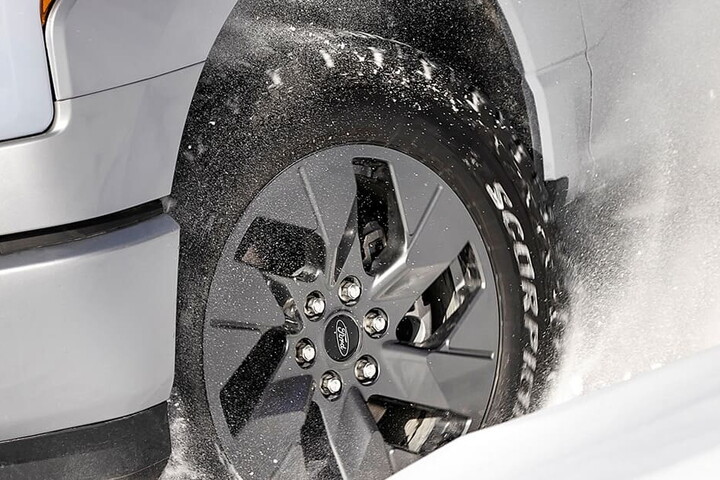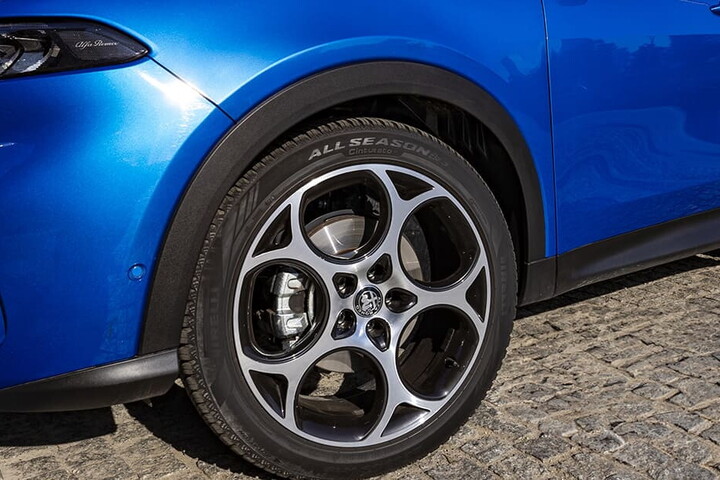The changing of the seasons, despite the fact that some people insist it no longer exists, represents those short, delicate parts of the year when big changes is the temperature signal the end of one season and the beginning of another, often causing issues for tyre performance due the variations in conditions met. If you use All season tyres, also known as all weather tyres, this problem will seem relative, but the process of changing from summer to winter tyres and back again is crucial in terms of safety for the majority of drivers, as well as for conforming to driving regulations.
HOW DO ALL SEASON TYRES WORK
All season tyres can be defined as a compromise solution between summer and winter tyres, considering their versatility of use. In areas where the temperature range is usually not so clear for a large part of the year, they are quite advantageous in many respects. All season tyres, in fact, offer control in a variety of conditions and high grip even on snow-covered surfaces, if you consider, for example, the Cinturato All Season SF3, which is also marked on the shoulder with the 3MPSF symbol (the symbol of the three mountain peaks with a snowflake, assigned to the best performing compounds at low temperatures after a specific evaluation). In any case, although they can be maintained in summer and winter, four-season tyres can never perform as well as summer or winter tyres in their respective conditions of use.

CHARACTERISTICS OF SUMMER TYRES
Turning to summer tyres, they are immediately distinguishable by the type of compound. The structure is stiffer than the others, considering the need to withstand the high operating temperatures during hot weather. The product range includes types with a flat profile and usually squared shoulders designed to accommodate high speeds and high cornering, but also rather sculpted treads of the symmetrical, directional or asymmetrical type.
At temperatures of 7°C and above, this type of tyre shows all its performance qualities, being unaffected by high levels of thermal resistance and frontal and lateral stresses, with high grip on both dry and wet asphalt thanks to the tread grooves.
When temperatures drop below 7°C, due to the more rigid structure of the tyre, the behaviour changes radically. Less warm weather does not allow the summer compound to work at its optimum operating speed and, at the same time, handling can be more complex and a tendency to skid can be felt.
A sensation similar to that which can be felt, for example, when driving on a wet stretch of road with over-worn tyres. The tread grooves, if reduced by excessive wear, cannot expel the water that limits contact with the road surface adequately. As a result, one can risk a dangerous aquaplaning effect that severely affects vehicle control. It is therefore a good idea to ensure that the condition of the tyres is always good to avoid annoying problems or potential dangers.

…AND WINTER TYRES
Being the softest and most elastic type of tyre, winter tyres quickly reach the appropriate temperatures. This property allows these tyres to perform consistently on different types of road surface, whether slippery or icy.
Below 7°C, braking distances decrease by an average of 10% in the wet and 20% on snow, and this is where the sipes - deep grooves that furrow the tread blocks - come into play. These sipes capture snow or slush to create a mechanical grip that makes the tyre stick to the ground, while the thicker grooves help expel water. A winning combination that avoids the use of chains. Here again, the level of wear of the tyre is crucial to its proper functioning: tyres that are not in excellent condition will therefore be ineffective.
In contrast to summer tyres, these appear to wear out above 7°C, precisely because the softer compounds tend to skid due to the considerable stresses and high temperatures to which they are subjected.




